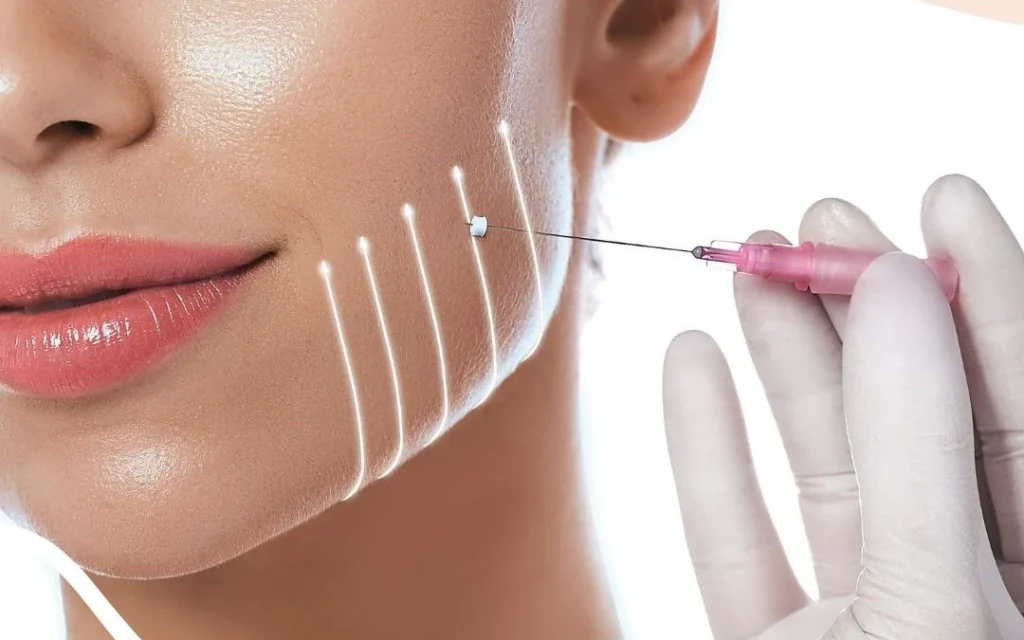In recent years, Polydioxanone (PDO) threads have emerged as a revolutionary solution in the field of cosmetic dermatology, offering patients a minimally invasive option for skin rejuvenation and lifting. This innovative treatment involves the insertion of biocompatible threads into the skin, stimulating collagen production and improving the overall appearance of the treated area. In this comprehensive guide, we will delve into the science behind PDO threads, their application in cosmetic procedures, the benefits they offer, and considerations for patients considering this treatment.
Understanding PDO Threads
Polydioxanone (PDO) is a synthetic, biocompatible polymer that has been used in various medical applications for decades, including surgical sutures. Its unique properties make it an ideal material for cosmetic procedures, particularly for skin rejuvenation and lifting.
PDO threads are fine, absorbable threads that are inserted into the skin using a needle or cannula. Once inserted, these threads act as a scaffold, supporting the tissue and stimulating the production of collagen and elastin. Collagen is a protein that provides structure and firmness to the skin, while elastin helps maintain its elasticity and resilience.
The mechanism of action of PDO threads involves two main processes: mechanical and biological. Mechanically, the threads provide immediate support to the skin tissue, lifting and tightening it. Over time, as the threads are absorbed by the body, they stimulate a biological response, triggering the production of new collagen and elastin fibers. This leads to gradual improvement in skin texture, firmness, and overall appearance.
Types of PDO Threads
There are several types of PDO threads available, each designed to target specific concerns and areas of the face and body:
Smooth Threads: These threads have a smooth surface and are typically used for superficial fine lines and wrinkles, as well as for overall skin rejuvenation.
Barbed Threads: Barbed or cogged threads have small barbs or cones along their length, which provide additional anchoring and lifting capacity. They are commonly used for lifting sagging skin and defining facial contours.
Screw Threads: Screw threads have a spiral pattern along their length, providing enhanced anchoring and support. They are often used for volumizing and lifting areas with deeper tissue laxity.
Mono Threads: Mono threads are smooth threads with no barbs or cones. They are primarily used for stimulating collagen production and improving skin texture.
The choice of PDO threads depends on the patient’s specific concerns, desired outcomes, and the expertise of the treating practitioner.
PDO Thread Procedures
PDO thread procedures are typically performed in a clinical setting by trained medical professionals, such as dermatologists or plastic surgeons. The procedure involves several steps:
Consultation: Before undergoing a PDO thread procedure, patients will have a consultation with their provider to discuss their goals, medical history, and suitability for the treatment.
Preparation: The treatment area is cleaned, and a topical anesthetic may be applied to minimize discomfort during the procedure.
Insertion of Threads: Using a needle or cannula, the PDO threads are inserted into the skin at precise locations determined during the consultation. The threads are then gently maneuvered to achieve the desired lifting and rejuvenating effect.
Post-Procedure Care: After the procedure, patients may experience mild swelling, bruising, or discomfort, which usually resolves within a few days. Patients are advised to avoid strenuous activities and excessive facial movements during the initial recovery period.
Follow-Up: Follow-up appointments may be scheduled to monitor the patient’s progress and ensure optimal results.
Benefits of PDO Threads
PDO threads offer a range of benefits for patients seeking skin rejuvenation and lifting:
Minimally Invasive: PDO thread procedures are minimally invasive compared to traditional surgical facelifts, with minimal downtime and discomfort.
Natural-Looking Results: PDO threads provide subtle, natural-looking results, enhancing the patient’s natural features without an overdone appearance.
Stimulates Collagen Production: By stimulating collagen production, PDO threads promote long-term improvements in skin texture, firmness, and elasticity.
Versatile: PDO threads can be used to address a variety of concerns, including sagging skin, fine lines and wrinkles, and loss of facial volume.
Customizable: The treatment can be customized to meet each patient’s unique needs and goals, with different types of threads and techniques available.
Considerations for Patients
While PDO threads offer numerous benefits, it’s essential for patients to consider the following factors before undergoing treatment:
Treatment Expectations: Patients should have realistic expectations about the results of PDO thread procedures. While the treatment can provide noticeable improvements, it may not achieve the same level of correction as surgical facelifts.
Provider Qualifications: PDO thread procedures should be performed by qualified, experienced medical professionals who have received specialized training in cosmetic dermatology.
Potential Risks: Although PDO thread procedures are generally safe, there are potential risks associated with any cosmetic treatment, including infection, bruising, and asymmetry. Patients should discuss these risks with their provider before undergoing treatment.
Maintenance: While PDO threads stimulate collagen production and provide long-lasting results, additional treatments may be necessary to maintain the desired outcome over time.
Cost: The cost of PDO thread procedures can vary depending on the number of threads used, the treatment area, and the provider’s expertise. Patients should discuss pricing and financing options with their provider before proceeding with treatment.
Conclusion
Polydioxanone (PDO) threads have revolutionized the field of cosmetic dermatology, offering patients a minimally invasive solution for skin rejuvenation and lifting. With their ability to stimulate collagen production and provide natural-looking results, PDO threads have gained popularity as an effective alternative to surgical facelifts. By understanding the science behind PDO threads, the types of threads available, the procedure process, and the benefits and considerations for patients, individuals can make informed decisions about whether this treatment is right for them. As with any cosmetic procedure, it’s essential to consult with a qualified medical professional to determine the most suitable treatment approach based on individual needs and goals.







